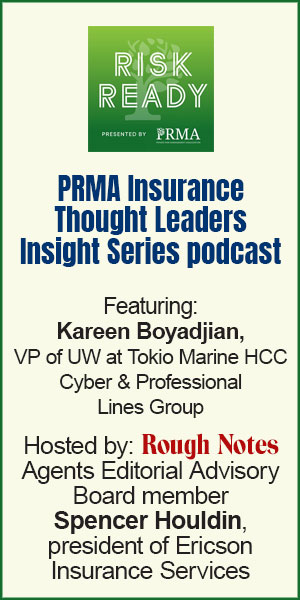CYBER LIABILITY: DATA IN DANGER
Understanding where cyber criminals are hitting the hardest and how to protect your clients
By Michael Barnett
The internet has given us the power to stay connected to each other, to become productive wherever we are as long as we have our devices, and has allowed for streamlined workflows to ease our day. But with all of the positives come the negatives. The downside of being so connected all the time, and having data at our fingertips, is that cyber criminals can find a way to have our data at their fingertips if they choose. When it comes to businesses, where there is highly sensitive data to find and money to be made, it’s no surprise why cyber criminals endlessly try to gain access to their systems.
We are seeing an increase in submission requests for cyber coverage, subsequent to the rise in global cyberattacks. Last year, many businesses went digital if they hadn’t already done so, putting themselves and their clients’ data at higher risk in the process.
The downside of being so connected all the time, and having data at our fingertips, is that cyber criminals can find a way to have our data at their fingertips if they choose.
As data increasingly continues to transition from a paper medium to electronic, so does the appeal of data theft by cyber criminals. In society’s search for efficiency, an increased amount of our private information is uploaded and saved to the internet. It is necessary that insureds holding such information for their clients should consider a cyber layer of coverage in the event of a data breach and theft.
Cybercrime on the rise
Many factors were at play when the pandemic started, making it easier for cyber criminals to prey on those vulnerable businesses. So it doesn’t come as a surprise that we’ve seen a 600% increase in the number of cyber- attacks since the COVID-19 pandemic started, according to statistics shared by PurpleSec, a cybersecurity content provider.
As government-mandated shutdowns started across the globe due to COVID-19, businesses were forced to close or transition their in-person operations to a cyber business. Brands that had never been digital before became digital, and employees from all areas who had never worked from home previously were now doing so. There were more connected devices in use and more data saved and shared in the cloud from these devices. These businesses and unprotected devices were vulnerable and became immediate targets for cyber criminals.
If these newly digital businesses didn’t make their insurance provider aware of any changes, those changes may not have been covered under their current cyber policy. Therefore, they wouldn’t be protected financially if they did fall victim to a cyber- attack. According to a recent IBM and Ponemon Institute study, the average cost of a data breach today is about $3,860,000.
Sensitive data holders at highest risk
Businesses that tend to hold highly sensitive client data—home healthcare agencies, non-emergency medical transportation, outpatient medical offices, and specifically daycares—are at the highest risk for cyber threats. In the future, we can expect that most clients outside of these industries will be at high risk for threats, as Cyber Ventures, a researching firm for the global cyber economy, predicts that 50% of the world’s data will be stored in the cloud by 2025.
Any risk focused on children, especially, carries an increased level of sensitivity to the protection and care of those operations and accounts. In the past, many daycares would utilize non-internet-based methods of conducting business, typically in the form of flyer and paper advertisements, sign-in and sign-out sheets, phone calls, paper records, and payment drop boxes.
Those mediums are quickly being replaced by computerized filings for permissions and medical records, websites for business information, social media groups for current events, smart phone applications, and other electronic programs for tuition payments. These data bases are ripe for target by cyber criminals.
Further, many businesses also have security systems, which save video recordings on- and off-site, and can be accessed by authorized users via smart phone. In relation to daycares, some systems allow parents to access live video monitoring of their children. Even employees can be required to use key cards and/or fingerprint scans for building access.
The chances for a cyberattack become greater as more people are allowed access to data. All of the saved data, biometrics, and medical information required to safely and efficiently utilize these systems in the conduction of business should be protected by the insured for this reason.
Cyber liability is vital
Brokers and agents should be mindful that many businesses, even outside of the typical cyber industries, are rapidly increasing their use of computerized data, much of which is accessible through internet-based systems. Cyber coverage is vital for your clients because it can fill gaps in coverage left unaddressed by standard general liability coverage forms.
As business operations continue to expand into the cyber arena, so will the need and desire to pursue cyber liability programs designed to protect in the event of an unexpected loss.
 The author
The author
Michael Barnett is a proud U.S. Air Force brat, born in South Korea and raised on Keesler Air Force Base in Biloxi, Mississippi. He graduated from Southeastern Louisiana University with a degree in Economics and Business Management and has been in the insurance industry for the past 14 years. He resides in Mandeville, Louisiana, with his wife and two sons.





